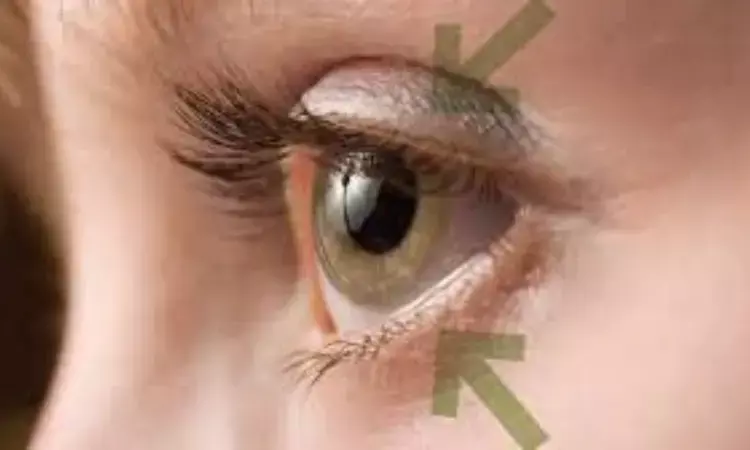- Home
- Medical news & Guidelines
- Anesthesiology
- Cardiology and CTVS
- Critical Care
- Dentistry
- Dermatology
- Diabetes and Endocrinology
- ENT
- Gastroenterology
- Medicine
- Nephrology
- Neurology
- Obstretics-Gynaecology
- Oncology
- Ophthalmology
- Orthopaedics
- Pediatrics-Neonatology
- Psychiatry
- Pulmonology
- Radiology
- Surgery
- Urology
- Laboratory Medicine
- Diet
- Nursing
- Paramedical
- Physiotherapy
- Health news
- Fact Check
- Bone Health Fact Check
- Brain Health Fact Check
- Cancer Related Fact Check
- Child Care Fact Check
- Dental and oral health fact check
- Diabetes and metabolic health fact check
- Diet and Nutrition Fact Check
- Eye and ENT Care Fact Check
- Fitness fact check
- Gut health fact check
- Heart health fact check
- Kidney health fact check
- Medical education fact check
- Men's health fact check
- Respiratory fact check
- Skin and hair care fact check
- Vaccine and Immunization fact check
- Women's health fact check
- AYUSH
- State News
- Andaman and Nicobar Islands
- Andhra Pradesh
- Arunachal Pradesh
- Assam
- Bihar
- Chandigarh
- Chattisgarh
- Dadra and Nagar Haveli
- Daman and Diu
- Delhi
- Goa
- Gujarat
- Haryana
- Himachal Pradesh
- Jammu & Kashmir
- Jharkhand
- Karnataka
- Kerala
- Ladakh
- Lakshadweep
- Madhya Pradesh
- Maharashtra
- Manipur
- Meghalaya
- Mizoram
- Nagaland
- Odisha
- Puducherry
- Punjab
- Rajasthan
- Sikkim
- Tamil Nadu
- Telangana
- Tripura
- Uttar Pradesh
- Uttrakhand
- West Bengal
- Medical Education
- Industry
Spaceflight leads to brow elevation without affecting eyelid position: Study

Spaceflight results in brow elevation without consistent elevation or depression of the eyelid. Los Angeles, CA: A recent study revealed that spaceflight although does not consistently alter upper eyelid position, it does lead to a significant elevation of brow position. In simpler words, gravity has a more pronounced effect on brow position than it does eyelid position. The study appears in the journal Ophthalmic Plastic and Reconstructive Surgery.
In the study, Justin Karlin, University of California, Los Angeles, CA, and colleagues aimed to describe the effect of spaceflight on upper eyelid and brow position.
For this purpose, the researchers collected images of astronauts on earth and in space from a National Aeronautics and Space Administration image library. The researchers obtained front-facing portraits captured within a 5-year period for each astronaut. At least 6 photos were collected per astronaut, 3 taken on earth, and 3 in zero gravity.
Measurements from the center of the pupil to the upper eyelid margin (MRD1) and the center of the pupil to the inferior eyebrow margin [pupil-to-brow (PTB)] were performed digitally for each image and averaged for each condition and each individual. Differences in mean MRD1 and PTB were assessed to illustrate the effects of zero gravity on eyelid and eyebrow position respectively.
The researchers in total retrieved one hundred and twelve photographs (55 earth, 57 space) from 18 astronauts (4 women, 14 men; mean age 45.9 years).
Based on the study, the researchers found the following:
- Zero gravity resulted in a mean PTB increase of 3.7 mm but did not result in a significant change in MRD1.
- Post hoc power analysis of the measured MRD1 difference was performed by simulation.
- At an MRD1 difference of 0.5 mm, the probability of a type II error is 2.6%, equivalent to a beta power of 97.4%. Thus, the researchers were 97.4% confident that a difference in MRD of 0.5 mm or greater would be detected.
"While spaceflight led to a significant elevation of PTB, it did not consistently alter MRD1," wrote the authors. "As such, the brow and eyelid appear to be independently regulated with respect to gravitational changes."
Reference:
Karlin, Justin N. M.D., M.S.*; Farajzadeh, Justin M.S.†; Stacy, Stephanie C.Phil.‡; Esfandiari, Mahtash Ph.D.‡; Rootman, Daniel B. M.D., M.S.* The Effect of Zero Gravity on Eyelid and Brow Position, Ophthalmic Plastic and Reconstructive Surgery: November/December 2021 - Volume 37 - Issue 6 - p 592-594 doi: 10.1097/IOP.0000000000001961
Dr Kamal Kant Kohli-MBBS, DTCD- a chest specialist with more than 30 years of practice and a flair for writing clinical articles, Dr Kamal Kant Kohli joined Medical Dialogues as a Chief Editor of Medical News. Besides writing articles, as an editor, he proofreads and verifies all the medical content published on Medical Dialogues including those coming from journals, studies,medical conferences,guidelines etc. Email: drkohli@medicaldialogues.in. Contact no. 011-43720751


